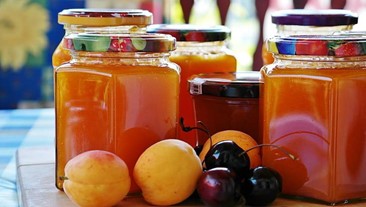Talking Plants
Jillian Patrie | University of Minnesota Yard and Garden Extension
Fall marks the time when gardeners start processing the fruit of their labor to enjoy all winter long. There are many ways to preserve vegetables and fruits, including canning, freezing and dehydrating and there is a lot of information out there that can be overwhelming and conflicting at times. Scientifically tested methods are the best avenue to take which ensure you are processing your harvest safely.
Start with fresh fruit and vegetables that are not overripe, make sure they are washed before starting the preparation process. Adding acids, using the correct jars and lids and processing preserved items for the correct amount of time all play an important part in safe preservation.
Using methods that are recommended by the USDA and other credible sources are key in making sure you avoid foodborne illnesses. Boiling water baths and pressure canners are the approved methods for canning, along with time and temperature. Following tested recipes and sticking to the instructions is important. Do not alter recipes or substitute unless it has been tested and proved as safe. The natural acidity of fruits and vegetables will influence the need for added acid, processing methods and time.
It is important to follow instructions, recipes, equipment information and processing times when canning and preserving fruits and vegetables. If you are interested in learning more about how to can and preserve safely visit UMN Extension website https://extension.umn.edu/preserving-and-preparing/home-canning-basics. If you have questions about canning and food safety visit https://extension.umn.edu/food-health-and-nutrition/contacts-food-health-and-nutrition or email questions to exfdsafe@umn.edu.
Some vegetables and fruits can be long term stored without canning, freezing or dehydrating. To ensure longer storage periods make sure to avoid breaking, nicking or bruising your produce during harvest. Only store vegetables that are good quality and are not overripe, damaged or have rotten areas. Common storage areas include basements, refrigerators and cellars, which all have varying temperatures and humidity. Shelf-life expectancy is dependent on fruit and vegetable type and differs from one variety to the next. For more information on expected shelf life estimates visit https://extension.umn.edu/planting-and-growing-guides/harvesting-and-storing-home-garden-vegetables.
Join UMN Extension and NDSU nutrition specialist Julie Garden-Robinson on September 30th for an in person canning and food preservation workshop to learn more about methods and safety. Visit Moorhead Community Education to register.
For questions about this article or local assistance please contact Clay County Extension Horticulture Educator Jill Patrie at 218-299-7338 or by email patri350@umn.edu.


